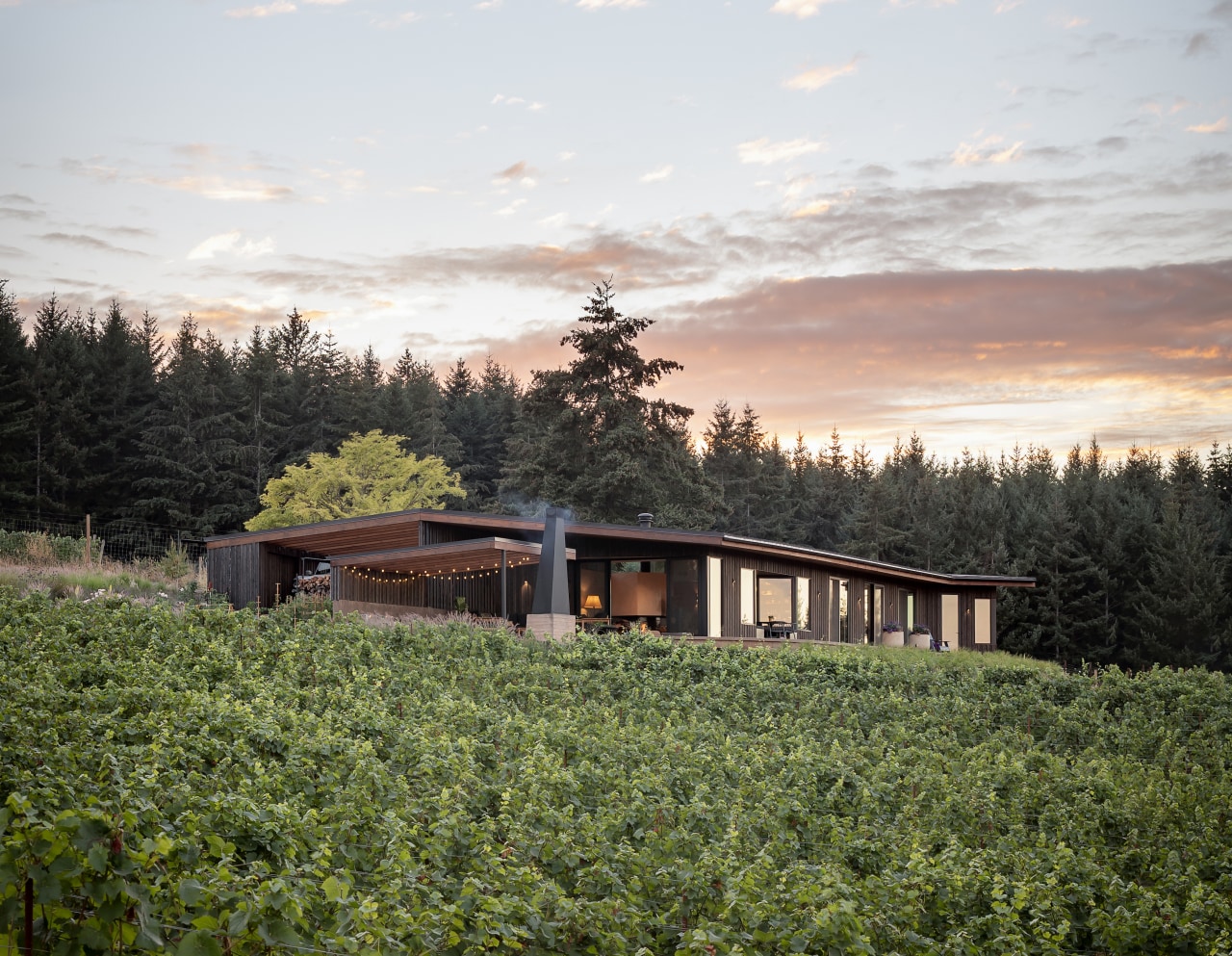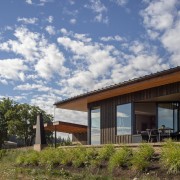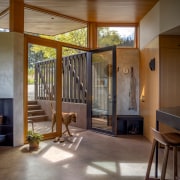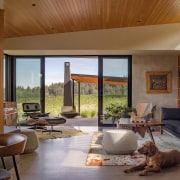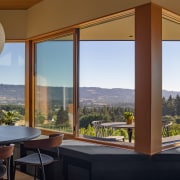Grown from the land
This home connects with its environment in more than its natural material make-up – the very patterning of the surrounding vineyards inform the architecture
Designed by Prentiss Balance Wickline Architects
From the architects:
This home is a single-family residence in the hills of a designated wine grape-growing region in the Willamette Valley.
Formed from the topography and agricultural plan of the site, this small home is carefully designed to both take in the surrounding landscape and become a part of it.
Indoor-outdoor elements visually extend the interior spaces, and the roof shape mimics the incline of the site.
The house is comfortably nestled into a newly planted vineyard, oriented to harmonise with the rows of vines.
It was only by chance that the owners purchased the land; they came across the lot while visiting family in the area and saw its potential as a vineyard – something they had always hoped for.
The simple parti of the home is derived from both the slope of the land and the linear overlay of the vines.
These two patterns – the topography and the vine rows – are set at 45 degrees to each other, with the grapevines planted on a 1.2m interval running north to south, the optimal sun orientation for growing.
The main axis of the home is aligned along the contours of the site and on the bias of the vineyard pattern, allowing for varied views of the cascading vineyard below.
Connection to the vineyard is emphasised with angled adjustments to the plan.
At the edge of the steepest slope, the main bedroom is turned to look down through the rows of vines.
The foot of a custom bed frame sits flush against the wall, with a large operable window that gives the sensation of sleeping outdoors.
The vineyard pattern is also the basis for two notches in the floorplan.
One forms the main entry vestibule, along which a three-sided wood-burning fireplace becomes the centerpiece of the living area.
The other notch is an inward cut which subtly separates the living area from the kitchen/dining and creates additional bench seating on both the interior and exterior.
To mitigate heat from intense summer sun, clerestory windows on the southern façade and translucent panels above the outdoor pavilion filter light while still keeping the space bright.
Board and batten cedar siding takes a note from the agrarian region and forms a screen around the home, tempering sunlight at the interior workroom.
This siding also gives privacy to the shower in the main bathroom, which opens completely to the outdoors.
Additional shading is brought to the site by the planted trees, especially the large oak tree in the centre of the circular driveway.
Materials were carefully chosen to blend in and echo the surrounding landscape on both the exterior and interior.
Concrete floors are tinted with colour to match the Jory soil of the area while cedar beams, milestone plaster walls, and dark soapstone countertops reflect the colours of the site.
Multiple patios step down along the slope of the land, guided by wood screens and coloured concrete retaining walls.
The outdoor pavilion features a large al fresco fireplace, making it the perfect gathering place for dining amongst the vines.
Like the rows of individual grapevines joining together, the home's multi-layered spaces are at once independent from each other and yet fully integrated.
Credit list
Contractor
Structural engineers
Helpful links
Windows and Doors
Cabinetry Hardware
Spas
Home Builder
Roofing
Heating
Flooring
Taps
Kitchen Design
Home Design
Story by: Trendsideas
Home kitchen bathroom commercial design
